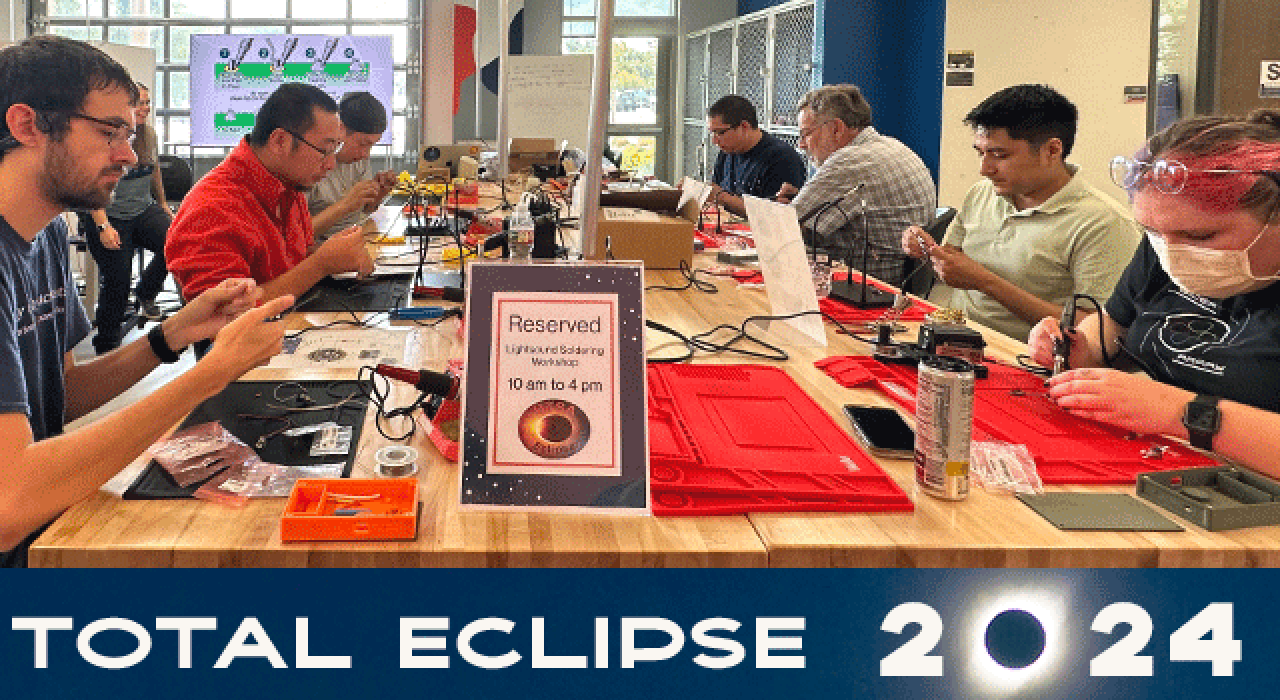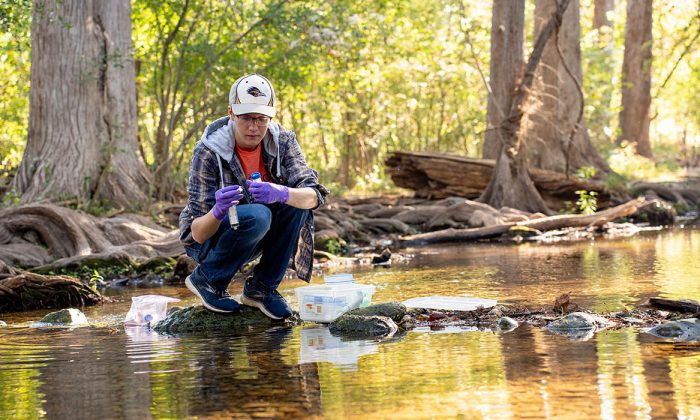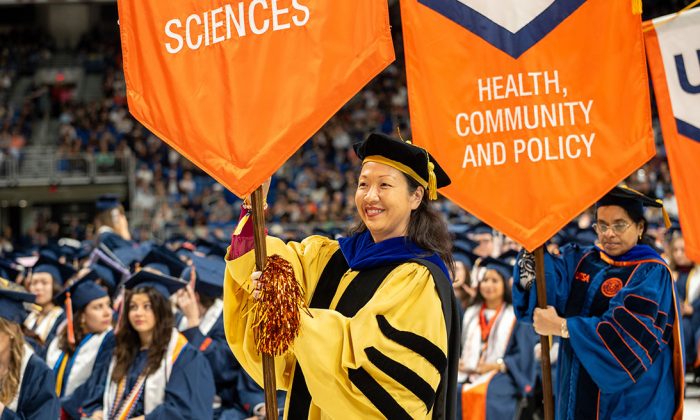MARCH 12, 2024 — A total solar eclipse is a breathtaking phenomenon and UTSA is doing its part to ensure that everyone has the opportunity to experience this once-in-a-lifetime event. UTSA participated in a nationwide effort to build LightSound devices, which convert light into sound to make solar eclipses more accessible to people who are blind or have low vision.
Similar in size to an iPhone, the rectangle-shaped LightSound devices come in various colors. They house a bed of wires connecting circuit boards.
On Monday, April 8, people from around the world will gather to experience this historic phenomenon, as the moon slowly positions itself between the Earth and the sun, creating another total solar eclipse for the Alamo City.
Groups of UTSA undergraduate and graduate students gathered in September to assemble more than 30 LightSound devices. They soldered wires together within a circuit board. The students are donating the devices to various organizations throughout the year to be used for the April total eclipse and October eclipse, opening the visual event to everyone.
“I’m happy we can do something about getting people who can’t see something so visual like an eclipse able to experience it with the rest of us.”
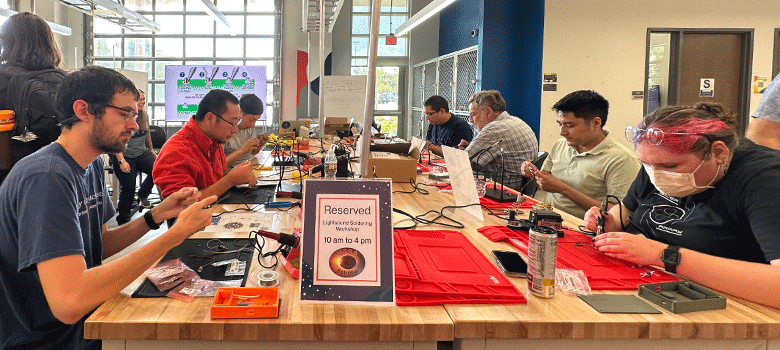
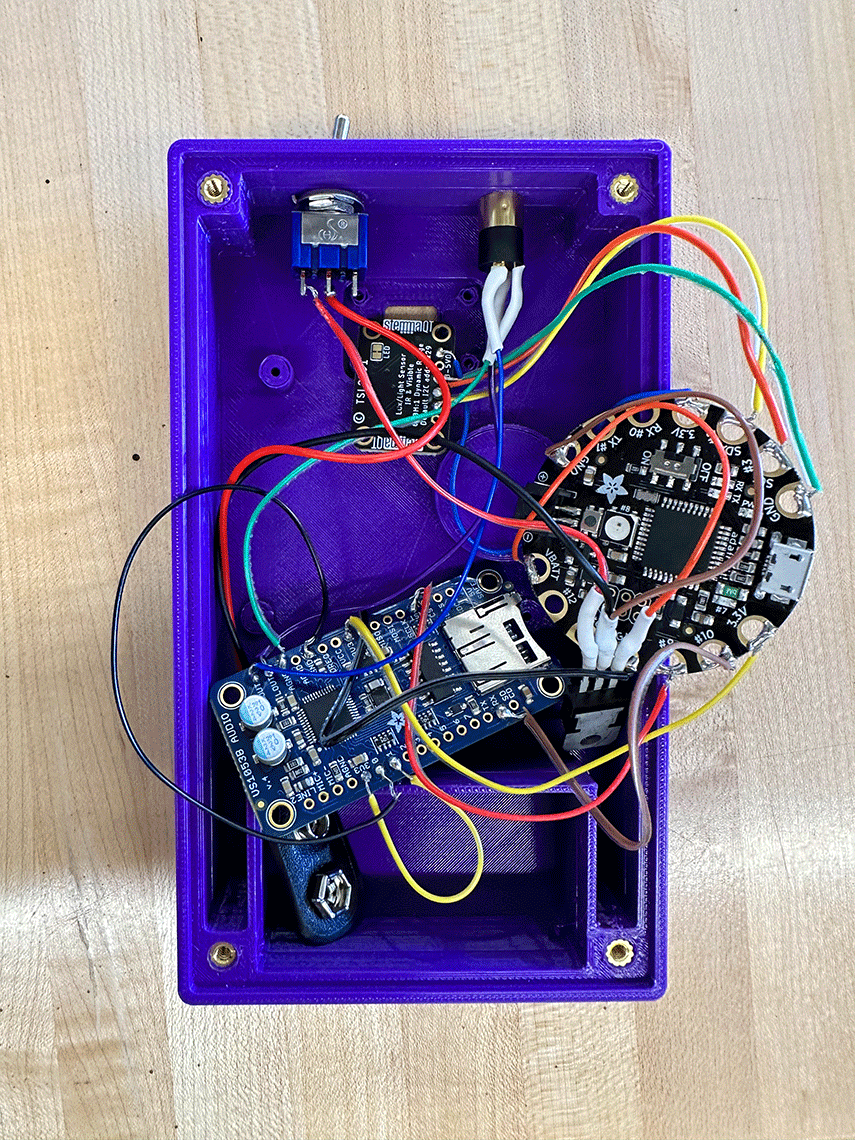
“It’s important to make science accessible so that everybody can participate in science,” UTSA Eclipse Project Manager Lindsay Fuller said. “This is one aspect of sonification that we can actually participate in and get students to participate in,” continued Fuller, a lecturer in the UTSA Department of Physics and Astronomy. “That way, everybody can experience the eclipse.”
The LightSound devices sonify light, applying a sound to the intensity of light as the moon slowly covers the sun during the total solar eclipse.
A light sensor monitors the brightness of sunlight, which declines as the moon gradually moves in front of the sun. As the moon’s shadow, called the umbra, enlarges and darkens, the device emits a deeper tone. Then, as the moon completes its passage across the sun and sunlight increases once more, the tone rises in response.
UTSA senior Tiffany Jensen was among the group of students assembling the devices.
“It may be a small amount being made here, but that’s contributing to so much more nationwide,” Jensen said. “I’m happy we can do something about getting people who can’t see something so visual like an eclipse able to experience it with the rest of us.”
Allyson Bieryla, an astronomer at Harvard University, helped develop the The LightSound Project for the 2017 Great American Eclipse. On August 21, 2017, a total solar eclipse passed through the northern Pacific and crossed the United States from west to east.
The initiative has since grown nationwide.
“We want to get everybody excited about eclipses,” Fuller said.
The UTSA Main Campus will be on the inner edge of the path of totality. Those on campus will catch the totality of the eclipse for 2½ minutes, from 1:33 p.m. to 1:35 p.m.
